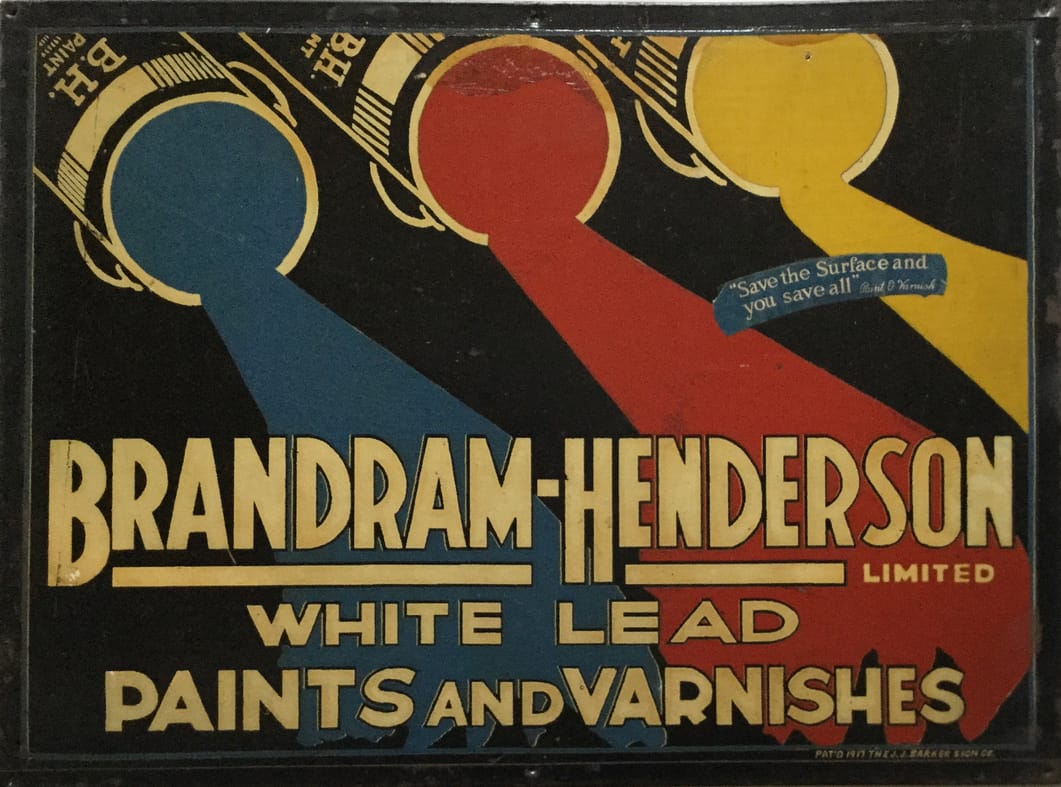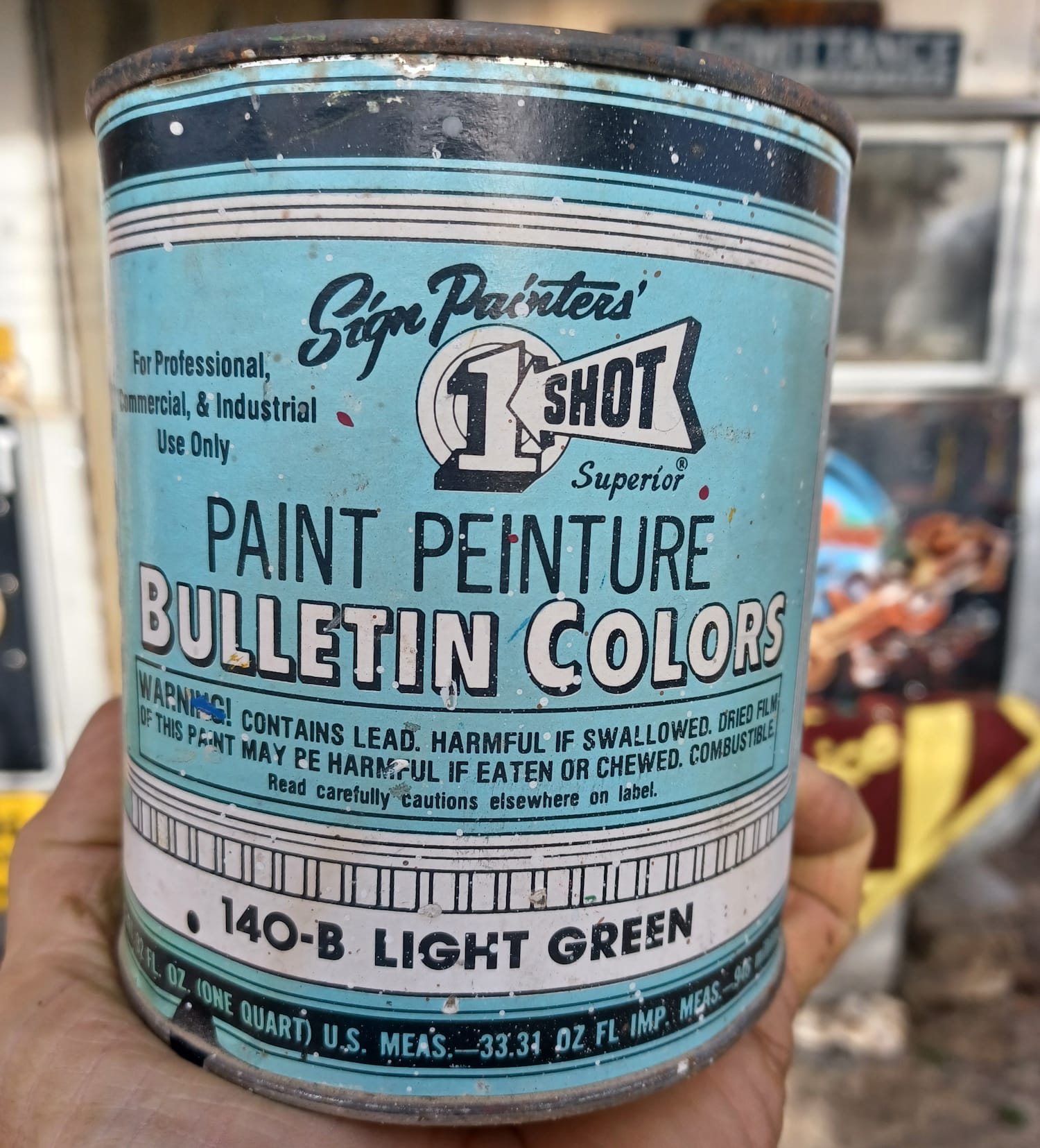Why Lead Paint Makes Signs Last: A Toxic Legacy
An account of the enduring (and highly toxic) legacy of lead paint on signs, and sign painters.

Since I first came to be interested in ghost signs, and their longevity, I've always heard the refrain that this was due to the lead in the paint. However, while not doubting the truth of the claim, I'd never received a satisfactory explanation for why that might be the case. Until now.
In a casual conversation ahead of her BLAG Meet session, Jill Strong (@jill.strong.signs) let slip that she has a PhD in polymer photochemistry. I didn't hesitate to put the lead question directly to her, resulting in this in-depth exploration of the material, its properties and, of course, the major hazards associated with it.
Sweet Lead
By Jill Strong

“One coat covered like a dream, especially the yellows, oranges and reds.” — Liane Barker / @brushandpenstudio
“It was wonderful paint! Dried very quickly, very hard, and was truly 'One-Shot' ... not the two-shot or even three-shot that we use now.” — Bob Dewhurst / @nevadahandpainted
The enduring nostalgia of the older generation of sign painters for lead-based paints crops up time and again. But why—technically—did these toxic paints leave such a durable impression, not only as signs but on the people who used them? Were they really better than the paints we've got now and why?
Lead Paint Types
Firstly, many people think that lead was a paint additive, in the same way tetra-ethyl lead was used as anti-knock petrol additive up until the 1970s. This is untrue. Lead compounds weren't just an additive; they were the paint itself. Here are three which were commonly used in paint manufacturing.